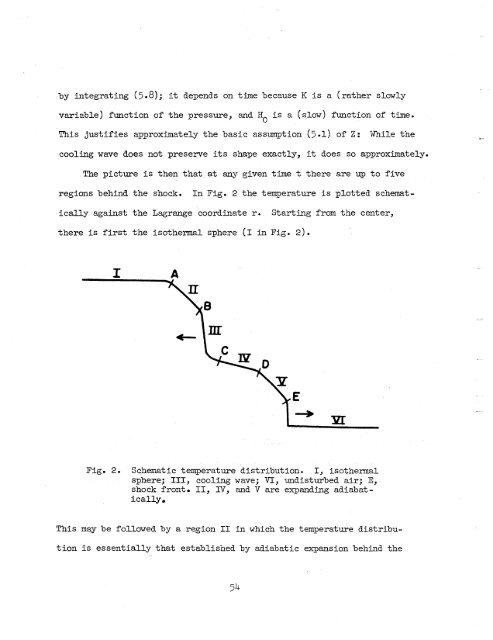Theory of the Fireball
Theory of the Fireball
Theory of the Fireball
You also want an ePaper? Increase the reach of your titles
YUMPU automatically turns print PDFs into web optimized ePapers that Google loves.
y integrating (5.8); it depends on time because K is a (ra<strong>the</strong>r slowly<br />
variable) function <strong>of</strong> <strong>the</strong> pressure, and H is a (slow) function <strong>of</strong> time.<br />
0<br />
This justifies approximately <strong>the</strong> basic assumption (3 .l) <strong>of</strong> 2: While <strong>the</strong><br />
cooling wave does not preserve its shape exactly, it does so approximately.<br />
The picture is <strong>the</strong>n that at any given time t <strong>the</strong>re are up to five<br />
regions behind <strong>the</strong> shock. In Fig. 2 <strong>the</strong> temperature is plotted schemat-<br />
ically against <strong>the</strong> Lerange coordinate r. Starting from <strong>the</strong> center,<br />
<strong>the</strong>re is first <strong>the</strong> iso<strong>the</strong>rmal sphere (I in Fig. 2) .<br />
Fig. 2. Schematic temperature distribution. I, iso<strong>the</strong>rmal<br />
sphere; 111, cooling wave; VI, undisturbed 'air; E,<br />
shock front 11, IY, and V are expanding adiabat -<br />
ically.<br />
This may be followed by a region I1 in which <strong>the</strong> temperature distribu-<br />
tion is essentially that established by adiabatic expansion behind <strong>the</strong>
















